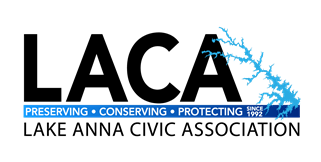By Mark Debord – September 2025
Lake Anna is cherished for its endless shoreline, fishing, boating, and lakeside living. But one invasive plant threatens all of that: hydrilla. This fast-spreading aquatic species can take over shorelines, clog waterways, and change the ecosystem.
Fortunately, Lake Anna has a structured plan in place — the Protocol for Hydrilla Management and Control — and you, the reader, have a role to play.
What is Hydrilla?
Hydrilla (Hydrilla verticillata) was brought to the U.S. via the aquarium trade in the 1960s. It grows fast, up to an inch per day, and spreads by fragmentation — meaning a tiny fragment broken off by a boat or rake can drift to a new area and begin a fresh infestation. Dense mats block sunlight, crowd out native plants, and reduce access for boats and recreation.
The Official Protocol: Your Guide, Your Role
Since 2015, the Lake Anna Advisory Committee (LAAC) has implemented a formal protocol to manage hydrilla on the public side of the lake. The document is titled Protocol for Hydrilla Management and Control at Lake Anna, Virginia(January 2025). It’s transparent, thorough, and meant to ensure all efforts — funding, treatment, priorities — are set by clear rules.
 View the full protocol here:
View the full protocol here:
Protocol for Hydrilla Management and Control – LAAC (PDF) Louisa County
- Surveys & mapping of hydrilla infestations by volunteers and residents, including details like location (latitude/longitude), size (acreage), and impact. Louisa County+1
- A scoring rubric to prioritize treatment sites based on factors such as size, navigational obstruction, recreational impact, feasibility, and restoration potential. Louisa County
- Clear phases over the year: plan development (October-January), carp stocking (if approved), surveys in summer, and final herbicide treatments. Louisa County
- Rules for private homeowners, HOAs, or POAs to request treatment under private funding, with review via the same scoring and permitting system. Louisa County
- Learn to identify hydrilla using photos or descriptions (the protocol document has “look-alike” attachments to help). Louisa County
- Report sightings through the Protocol’s process. Use the Watch List / survey forms. Be precise about location and size.
- If you’re in an HOA or a private property group, consider submitting requests under the private-funding provisions in the protocol.
- Support efforts like EutroPHIX that address nutrient overload.
Here’s what the protocol covers:
Because funding and manpower are limited, requests must follow this protocol to be considered. You can’t just hire herbicide or carp arbitrarily; it needs to go through the LAAC process.
Why Hydrilla Is Getting Out of Hand
Hydrilla doesn’t thrive in a vacuum. It’s fed by too many nutrients, especially phosphorus, in the lake. Those same excess nutrients also spark harmful algal blooms (HABs) — though HABs are a different issue, they share the root cause. Reducing nutrient loads helps hurt hydrilla’s edge while improving overall water quality.
EutroPHIX & Nutrient Reduction
One way Lake Anna is fighting the nutrient problem is EutroPHIX, a treatment that safely removes excess phosphorus. By reducing the “fertilizer” hydrilla and algae depend on, EutroPHIX helps make the lake less hospitable to both invaders and blooms.
While EutroPHIX is not a hydrilla-control tool exactly, it supports the long-term goal: a healthier, balanced lake.
What You Can Do
To help manage hydrilla more effectively:
Hydrilla is invasive, persistent, and cheap to underestimate — but Lake Anna now has a clear roadmap to manage it. The Protocol for Hydrilla Management and Control is your go-to source for how treatments are chosen, how you can request action, and how the community can help. Click the link above to read the full protocol and see how you can make a difference. For more information, please see the FAQs LAAC has posted at Hydrilla at Lake Anna | Louisa County, VA.


mark.debord@lakeannavirginia.org
